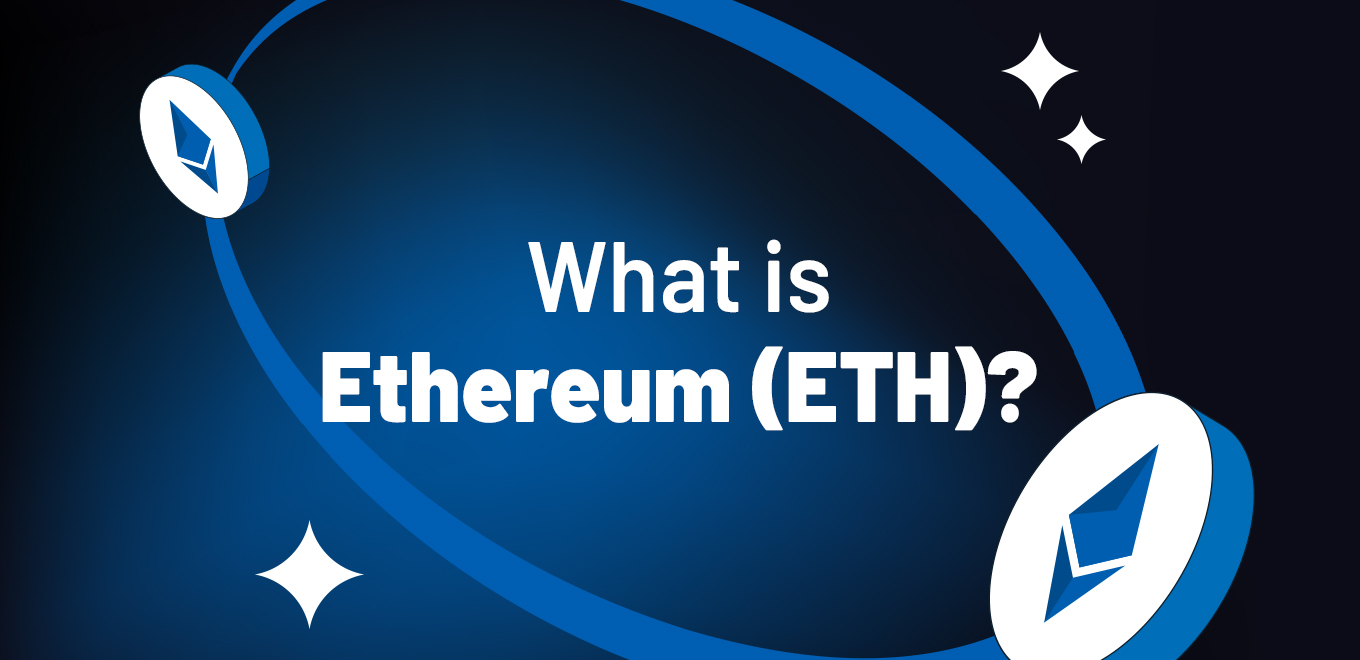Ethereum, with the second-largest market capitalization after Bitcoin, has come closest to achieving the same level of decentralization. Through its innovations and pioneering approach, Ethereum has made a significant impact on the cryptocurrency sector. In this article, you will find information on Ethereum, including what it is, how it works, and how it is produced.
TABLE OF CONTENTS
What is Ethereum (ETH)?
Ethereum is, in the broadest sense, a decentralized computing platform. In addition to its open-source, publicly accessible, and blockchain-based structure, Ethereum supports a computer protocol called “smart contracts.” The platform was created in 2013 by Russian programmer Vitalik Buterin and British programmer Gavin Wood.
How Does Ethereum (ETH) Work?
Ethereum enables the creation and execution of decentralized applications (dApps) by leveraging its underlying technologies. These applications, which have a wide range of use cases, allow users to perform numerous intermediary-free transactions. Among these transactions are actions like sending money and creating secure contracts without the need for notaries, where intermediaries are removed while maintaining a high level of trust. In this context, smart contracts minimize the risk of fraud, enabling users to conduct peer-to-peer transactions in a transparent and secure manner.
Ether (ETH) is the cryptocurrency created by the Ethereum platform. The primary purpose of ETH is to incentivize programmers who run the Ethereum protocol on their computers. These programmers are rewarded with this digital asset for producing high-quality software, which helps maintain the network’s health and security.
How is Ethereum Produced?
Ethereum was initially produced through mining, similar to Bitcoin. However, with the development of Ethereum 2.0, Ethereum transitioned away from the mining structure used by Bitcoin and adopted a Proof of Stake (PoS) system, shifting to a staking-based model for its production.
After Ethereum 2.0, mining devices are no longer required to mine ETH. Instead, a capital of 32 ETH and the technical knowledge to manage the staking process are necessary.
One of the main reasons for Ethereum’s transition from Bitcoin’s Proof of Work (PoW) to Proof of Stake (PoS) is that the PoS method is environmentally friendly, consuming 99% less energy. Additionally, it allows for more effective and faster technical developments, enabling Ethereum to better accommodate a larger user base in the future.
What is the Difference Between Ethereum and Bitcoin?
Bitcoin is fundamentally a digital currency system based on blockchain technology, accompanied by its own cryptocurrency. As the first cryptocurrency, Bitcoin is regarded as the progenitor of all cryptocurrencies and the architect of the technological infrastructure that supports them. In contrast, Ethereum operates as a decentralized computing platform and is seen as the most influential cryptocurrency in terms of contributing to the industry’s growth, thanks to its ecosystem of smart contracts and protocols like dApps (decentralized applications). While Bitcoin enabled the emergence of the cryptocurrency industry, Ethereum has played an innovative role in shaping its future. In fact, some industry leaders have referred to Ethereum as the “2.0 version” of the sector.
In summary, perhaps the only similarity between Bitcoin and Ethereum is that they both have cryptocurrencies traded on the market and benefit from blockchain technology. Aside from this, Bitcoin and Ethereum play two entirely different roles in the industry. While Bitcoin has introduced the world to an entirely new form of currency, Ethereum, with its computing platform role, enables everyone to take advantage of advanced technologies such as distributed ledgers, dApps, and smart contracts.
How to Buy and Sell Ethereum?
You can buy and sell Ethereum (ETH) with Tether on the BtcTurk | Global website. If you are not a member of BtcTurk | Global, you can sign up immediately on our website and buy Ethereum (ETH) by depositing cryptocurrency into your account.
How to Store Ethereum (ETH)?
Ethereum, being the oldest and most widely developed platform in the industry, can be considered the project with the broadest range of wallet options. Ethereum can be stored in desktop, mobile, hardware, or online wallets. Alternatively, you can create a paper wallet to store your Ethereum (ETH) securely.
One of the most important factors to consider when choosing a wallet is the private key. You should ensure that the wallet you choose provides you with a 12-24 word recovery phrase (also known as a seed or recovery words). These words are the only solution to recover your wallet if needed.
You can also store Ethereum on hardware wallets, which are portable, secure, and not constantly connected to the internet. To send Ethereum from a hardware wallet, you need to connect the device to your computer and perform the transaction using the wallet’s app. Since payment transactions are made by entering a password via physical buttons on the device, you can safely carry your wallet with you. Additionally, you can print your Ethereum address as a QR code and use it as a paper wallet. If you decide to use a paper wallet, be sure not to store your private key and Ethereum address in the same place for added security.

